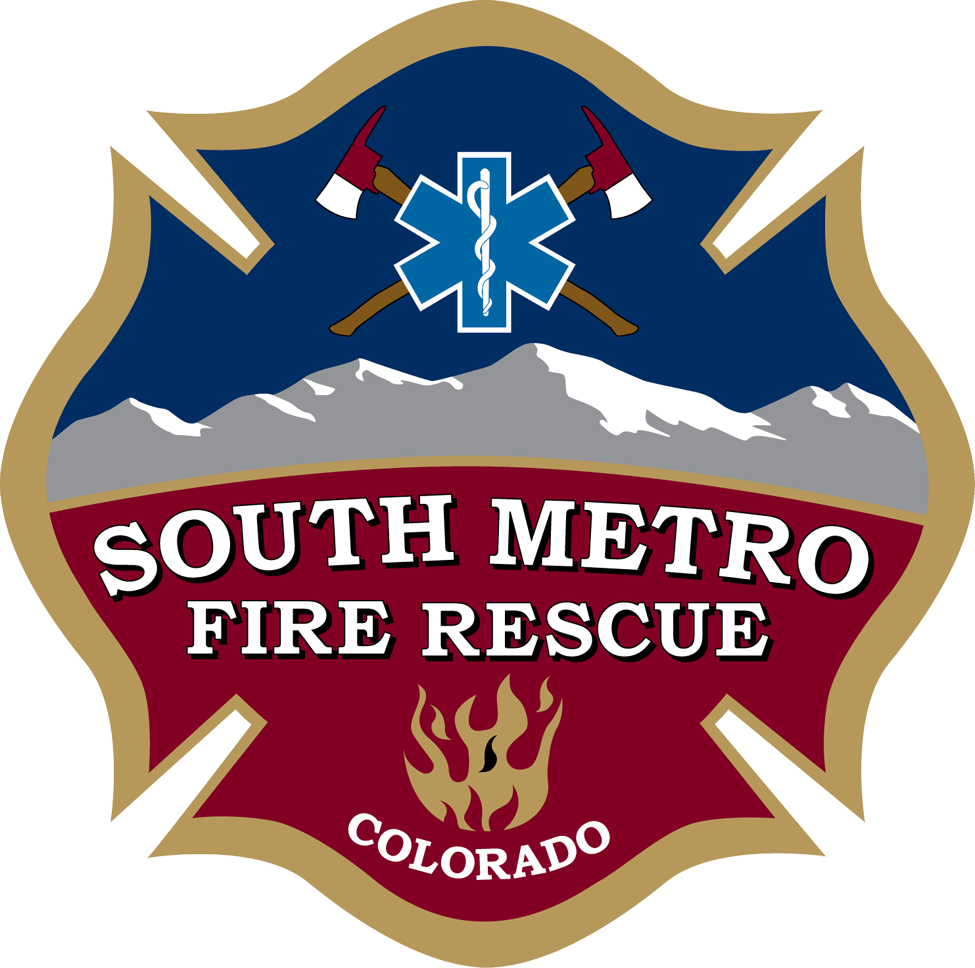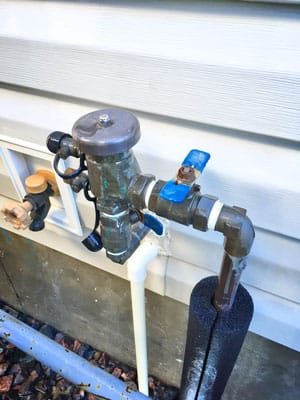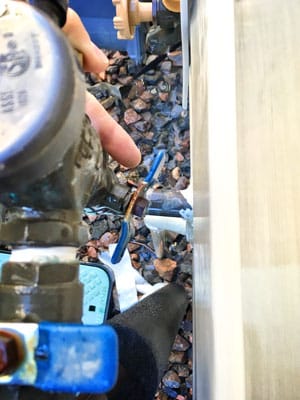Freezing water causing issues for firefighters


Turning both valves (pictured here in blue) perpendicular to the direction of a pipe will ensure the water flow from the pipe is off. If the valve is in line with the direction of the pipe, water will be flowing.

Information and photos provided by South Metro Fire Rescue
While usually applying water as a solution to public safety issues, South Metro Fire Rescue (SMFR) firefighters have been busy tackling water as a problem in recent weeks due to the changes in the weather.
According to SMFR Public Information Officer Eric Hurst, most of the calls were for burst backflow preventers due to sprinkler systems not being drained or blown out yet. “SMFR crews met a lot of caring people who saw a ruptured pipe, didn’t understand the problem or didn’t know how to help, so they called the fire department,” stated Hurst.
Response and mitigation are an important part of what SMFR does, and crews were able to quickly shut off the water and prevent more damage, in most cases. “People didn’t do anything wrong by calling South Metro,” he stated, “but this video (youtu.be/1h6lwOFHLqU) was created to help the community prepare for and prevent water damage on their own if they are able to. Knowing where your valves are located and how to shut them off ahead of time will help reduce damage if a leak or burst pipes do occur.”
Backflow preventers have two levers, one that controls water from the home to the valve and the other controls water from the valve out to the sprinkler system. If water is seen gushing from a sprinkler head or from the backflow preventer, rotating those levers perpendicular to the pipe will shut off the flow of water. If the water doesn’t stop after turning both of those levers off, additional shutoff valves inside the house will have to be used.
Sometimes winter weather sneaks up before sprinkler blowouts can occur, so if a freeze is predicted, homeowners can always turn these valves off ahead of time, just in case, stated Hurst.